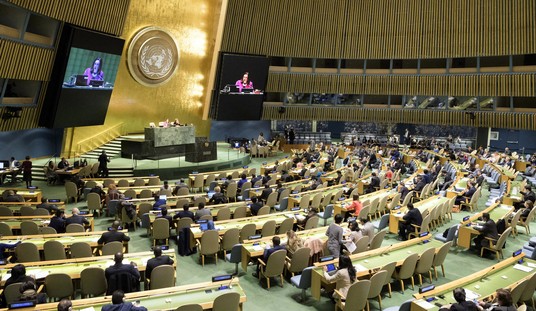The Obama administration is wildly enthusiastic when it comes to propping up uncompetitive and so-called ‘green’ technologies they they in their wisdom have deemed will be energy sources of the future, and one of the reasons they generally offer for this exercise in asininity is our supposed need to become less reliant on foreign oil. Evidently, however, they feel no such similar desire to make sure that we become less reliant on foreign rare earth elements — the seventeen metallic elements that are essential to the creation of wind turbines, batteries for electric cars, solar cells, as well as cell phones and computers and all kinds of high technology.
Rare earth elements aren’t actually that rare, but the process for mining for and extracting them is currently a relatively energy-intensive, environmentally tricky, and costly practice. The United States maintains some pretty tight restrictions on their domestic production, and there are no substitutes for rare earths at the moment.
China, meanwhile, just happens to have some of the world’s largest known deposits of rare earth elements and hasn’t shied away from taking full advantage of them. They almost completely dominate the global market by contributing more the vast majority of the rare earths supply. There have been multiple dustups through the World Trade Organization over the past few years over China’s supposedly unacceptable trade practices, and while the United States is always keeping a weather eye on the situation and will be the first to complain about market manipulation, we haven’t really done much to streamline our permitting process and safety regulations to boost domestic production, either.
Which is a shame, because we definitely have available resources:
U.S. Rare Earths, Inc., (OTCBB:UREE) announced the results of its 2013 exploration in Lemhi Pass, Montana. The results confirmed that the company’s properties have the highest accessible critical rare earth deposit in North America. The initial results of the sub-surface drilling in Phase I of the Lemhi Pass exploration, not only confirms historic data, but returned higher grades of rare earths than first reported.
The exploration work will allow UREE to adequately assess its land positions and prioritize resource exploration and development efforts. UREE has initiated an extended drilling program in Lemhi Pass, Montana based on the positive results.
The results are part of the detailed work completed in Phase I on the “Last Chance Vein” property located in the southeast part of the trend. This area already has access roads and underground works two adits with tunneling over 1500 feet (453m).
The property, located near the mining-belt of Idaho and Montana is uniquely positioned for development of a processing facility. Full-scale mining and milling operations would create significant and sustainable jobs in the region.
Some increases in production over the past couple of years in the United States and Australia have helped to curb china’s market share somewhat. The Department of Energy is sponsoring a handful of R&D projects looking for potential rare earth substitutes, filing WTO cases is all well and good, I suppose, but the Obama administration could and should be doing more if they want to take full ownership of the alternative technologies that they have so ardently professed are the ways of the future — starting with cleaning up the prohibitively slow and complex permitting process and regulations that discourage companies and investors. I’m aware that lessening the burden of regulations is an endeavor with which President Obama is generally unfamiliar, but there’s been legislation on the table several times during his tenure with no action.








Join the conversation as a VIP Member